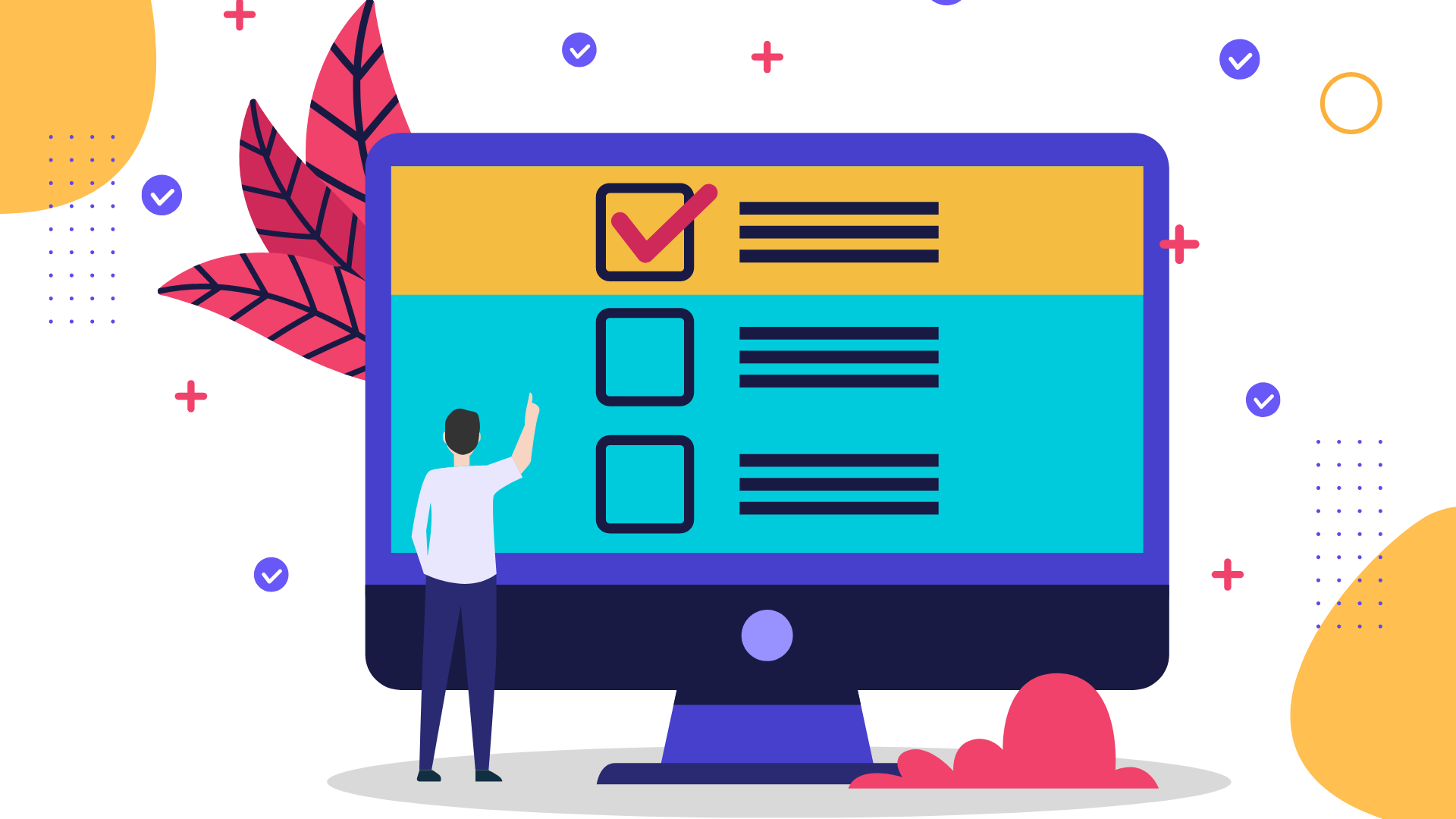
Not Using Open Ended Questions? You might be Losing Quality Data.
The only way to learn what other people are thinking unless you have telepathic abilities, is to ask them.
That is the purpose of surveys. But how you ask the question frequently affects the type of response you receive, so choosing whether to ask an open-ended, closed-ended, or multiple-choice question inquiry is one of your first choices.
“What Kind of Improvements Do You Expect In This Decoration?” for example, is an open-ended question that can be addressed in depth.
In contrast, closed-ended questions have a narrower emphasis and are typically replied to with a single word or a selection from a small number of multiple-choice answers.
You may learn to ask better questions and get better, more useful answers by being aware of the distinction between the two.
Read this thorough guide on open ended questions including the definition of open ended questions, why open ended questions are used, examples of open ended questions, how to write open ended questions, advantages of open ended questions, and many more.
Let us begin with the definition of open ended questions.
What are open ended questions?
Open-ended survey questions are unstructured, free-form inquiries that permit respondents to respond in plain-text style, allowing them to express their full knowledge, emotion, and comprehension. It implies that there is more than one possible answer to this question.
An open-ended question allows you to delve deeply into the respondent’s answers and glean important information about the topic at hand.
As opposed to a closed-ended question, which limits and narrows survey responses to the provided possibilities. These questions can be used to elicit extensive and illustrative information about a subject.
Unlock Unlimited Surveys & Responses with Fynzo Survey – 99% Features Free Forever!
⭐ Rated #1 Trending Survey Tool by Software Suggest ⭐
Why Choose Fynzo Survey?
- Unlimited Surveys: Create as many surveys as you need without any limits.
- Unlimited Responses: Collect unlimited responses effortlessly.
- 99% Free Features: Access nearly all our powerful features for free, forever.
- User-Friendly: Easy setup, create your survey in minutes.
Examples of open ended questions
Let us look into some examples so as to understand the open ended questions a little bit more.
- What would you say about school to outsiders?
- How do you think our existing methods of operation are?
- What do you think of the education system?
- If hired, how do you intend to leverage your current skills to enhance organizational growth?
- What actions would you take to boost productivity?
- What would you think if the workweek was changed to four days?
- What would you think if we changed the perks we offer?
- What factors are crucial when it comes to brainstorming?
- If you were a teacher for a day, what would you teach?
You can learn from the aforementioned instances that there is no one right response for open-ended questions, there is no word restriction, and you can freely respond to the inquiries without being restricted to any one scenario.
Advantages of open ended questions
You must have thought of the question: why open ended questions?
When you want to learn more about your consumers and their needs, grasp the context of their actions, and/or find out why they are satisfied or dissatisfied with your product, ask an open-ended question.
Now let us get acquainted with the advantages of open ended questions when you put them in your survey while doing research.
Here are the key 6 points that are clearly showing the importance of open ended questions in the research.
1. Permit countless responses
Since there is no end to the various answers to open-ended inquiries, there is no restriction on the kind of data you can gather.
Conversational comments in the words of specific consumers allow you to comprehend the questions more thoroughly because various respondents may approach them from greatly diverse perspectives.
2. Provide accurate customer insights
With open-ended questions, you may gather direct feedback from customers on your goods and services as well as their personal experiences. You learn about their views, opinions, and perceptions about your brand.
3. Give a lot more information
Respondents are free to delve into as much detail as they want while answering open-ended questions.
Because they are worded exactly as the respondents speak, open-ended responses offer more subtlety because they allow the respondents to express themselves more naturally. Open-ended inquiries produce answers that are less vague because they aren’t dependent on a rating system or several choices.
4. Allows for the gathering of demographic data
Open-ended inquiries enable you to get personal and demographic data from clients, such as name, age, gender, and phone number, which you may use to target and segment your product offerings.
Additionally, it allows you to get in touch with your clients when necessary for sales and marketing initiatives.
5. Offer more in-depth, qualitative information
Closed-ended questions provide quantitative information in the form of figures, percentages, or just positive/negative statements.
Open-ended inquiries provide detailed information about your customers that can be used to make judgments and determine why something occurred.
In order to understand client patterns as persons rather than just numbers, qualitative data can be used to read between the lines.
6. Increased client satisfaction
You may improve customer satisfaction by making better decisions about your product and marketing when you understand how your consumers really feel about you and what they want from your products and services.
Disadvantages of open ended questions
It is an undeniable fact that there will always be disadvantages along with advantages. Open-ended questions also have two sides, just like every coin.
After examining the advantages of open-ended inquiries, let’s now examine some of their drawbacks.
Unlock Unlimited Surveys & Responses with Fynzo Survey – 99% Features Free Forever!
⭐ Rated #1 Trending Survey Tool by Software Suggest ⭐
Why Choose Fynzo Survey?
- Unlimited Surveys: Create as many surveys as you need without any limits.
- Unlimited Responses: Collect unlimited responses effortlessly.
- 99% Free Features: Access nearly all our powerful features for free, forever.
- User-Friendly: Easy setup, create your survey in minutes.
1. Taking a long time to respond
Respondents cannot simply select or click their response to an open-ended question in an online or in-app survey.
They are required to write up their responses, occasionally going into great depth. If you can get them to take part, this takes a lot longer but the data is worthwhile.
2. Very little response rate
Everyone is busy taking care of their own affairs, as you are aware, thus nobody has time to spend writing and filling out feedback forms. As a result, surveys with open-ended questions receive lower response rates than surveys with closed-ended ones.
3. Challenging to compare
Open-ended responses can’t be compared precisely mathematically because they aren’t based on figures or percentages.
They are frequently objective, making it more difficult to compare them with reliable facts and outcomes.
4. Data analysis and interpretation challenges
Despite the fact that the consumer feedback data obtained through open-ended questions are rich, it would be challenging for you to assess and comprehend all of the data because customers would likely have varying opinions and would submit the feedback in their own manner.
Therefore, it will be difficult to evaluate all the data and produce insightful reports.
5. Can collect a lot of pointless information
Customers can respond freely and on their own terms to open-ended inquiries because everyone has a unique way of expressing themselves.
Therefore, there is always a greater chance of collecting information that won’t be helpful to the firm.
In conclusion, we can state that open-ended questions can be used to gather precise customer insights about their attitudes, feelings, and viewpoints toward your services, goods, and company.
6. Not the best method for obtaining quantitative statistics
The information obtained from open-ended questions cannot be easily categorized in order to provide quantitative data.
Therefore, if you wish to determine quantifiable data from consumer feedback, open-ended questions are not a smart choice.
How to write open ended questions?
“Did you find this class beneficial? The teacher can ask at the end of any class. Since they can only respond “yes” or “no,” that is a closed-ended inquiry.
Instead, I might inquire, “We had to go through a little procedure to get here, didn’t we? Can you describe the benefits you believe you have gotten from going through the full process?” What happens next?
The way your student expresses their understanding of the procedure helps you to understand your worth even more clearly.
Additionally, questioning your prospects and clients about value really encourages them to think more highly of it. The end effect is that you gain favorability and acquire the privilege to request recommendations.”
Here are four strategies for formulating strong open-ended questions:
1. Recognize the differences between closed-ended and open-ended inquiries
You must be completely clear about open-ended vs. closed-ended questions before you begin writing questions. Your online survey’s purpose should be obvious, and from there, you can determine the types of questions you should ask.
Make sure not to guide the respondents with your questions and to give them the entire freedom to fill in anything they want if you want to receive 100% transparent input on these questions.
2. Before assembling the questionnaire, make a list of open-ended inquiries
Make a list of survey questions that you’d like to utilize once you have clarity on what open-ended questions are and how to use them.
Any open-ended question that fits the nature and goal of your research is acceptable.
For instance, if you are conducting a survey to determine the degree of employee happiness at your business, the following are some examples of open-ended questions you could include in your questionnaire:
- What would you say the working environment is like at the company?
- Are you happy with your work and job description?
- Are you happy with the benefits and pay you receive?
- What potential for growth do you see working for the company?
The same applies to asking any inquiry in line with the research.
3. Any query can be transformed into an open-ended inquiry
Here, observation is crucial. Examine the questions you typically ask your clients, potential clients, and everyone else you come into contact with. Determine whether your inquiries are open-ended or closed-ended.
Try to change any closed-ended questions into open-ended ones if you think doing so will produce more useful information and better results.
4. A closed-ended question should be followed by an open-ended one
Although it’s not always practicable, you can ask an open-ended question after asking a closed-ended one to gather more information.
For instance, if you have a closed question with the choices “Yes” and “No” like “Do you think the work atmosphere in this company was efficient?” You can follow it up with an open question like “How do you think we can make the work atmosphere of the company better?”
When it comes to quantitative surveys, open questions have an advantage over closed ones.
Conclusion
It is obvious that open-ended questions have the potential to provide more profound and insightful information than closed-ended, Yes/No, or multiple-choice questions. They might require a little more work to evaluate, but it won’t take much more effort with the aid of best survey tool Fynzo Survey.
Additionally, you’ll obtain longer-lasting, considerably more effective outcomes while saving time and money with Fynzo.
Combine open-ended and closed-ended questions for qualitative and quantitative data for the best outcomes. When you have the right tools, you can continuously and at the moment examine open-ended inquiries (or online consumer reviews).
Unlock Unlimited Surveys & Responses with Fynzo Survey – 99% Features Free Forever!
⭐ Rated #1 Trending Survey Tool by Software Suggest ⭐
Why Choose Fynzo Survey?
- Unlimited Surveys: Create as many surveys as you need without any limits.
- Unlimited Responses: Collect unlimited responses effortlessly.
- 99% Free Features: Access nearly all our powerful features for free, forever.
- User-Friendly: Easy setup, create your survey in minutes.
FAQs
1. What is an example of openn ended question?
“What do you think about this company’s work structure?”, for example is an
Open-ended question and is more general and allows for detailed responses.
On the other side, the closed-ended questions are more specific and typically only allow for a single word or a selection from a small number of multiple-choice options (for example, “Are you satisfied with this company’s work structure?” Yes/No/Mostly/Not quite”).
2. What are the types of open-ended questions?
The most typical kinds of open-ended inquiries are as follows:
- Traditional text query
- A series of inquiries.
- Use incomplete sentences as a test.







